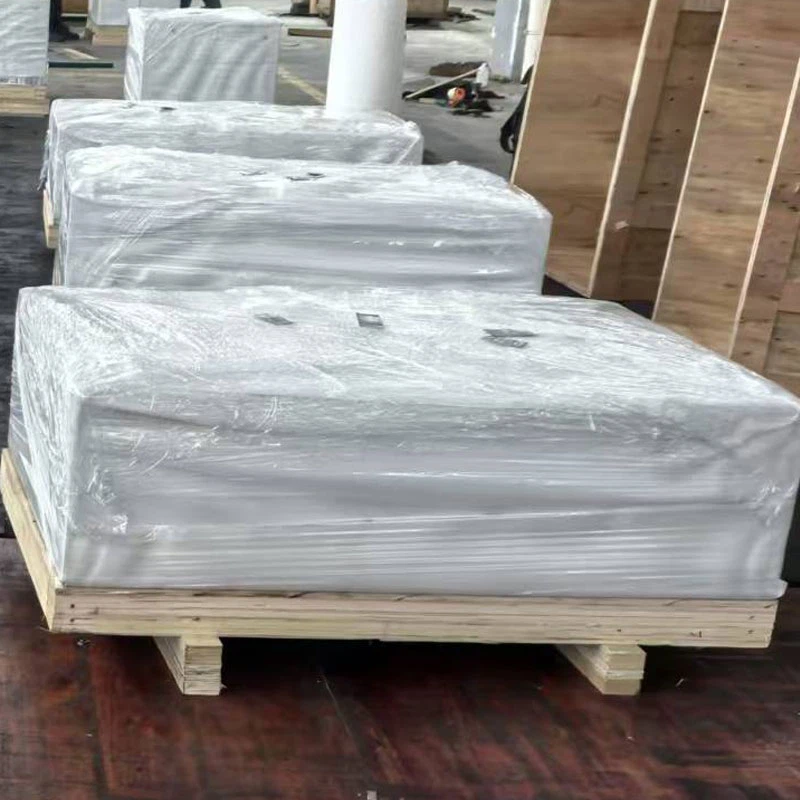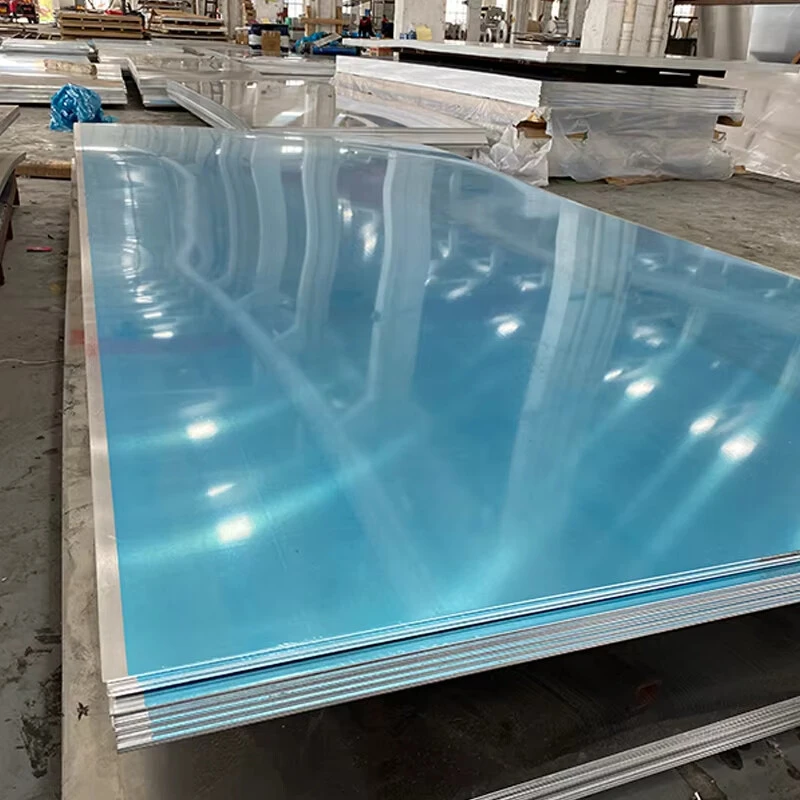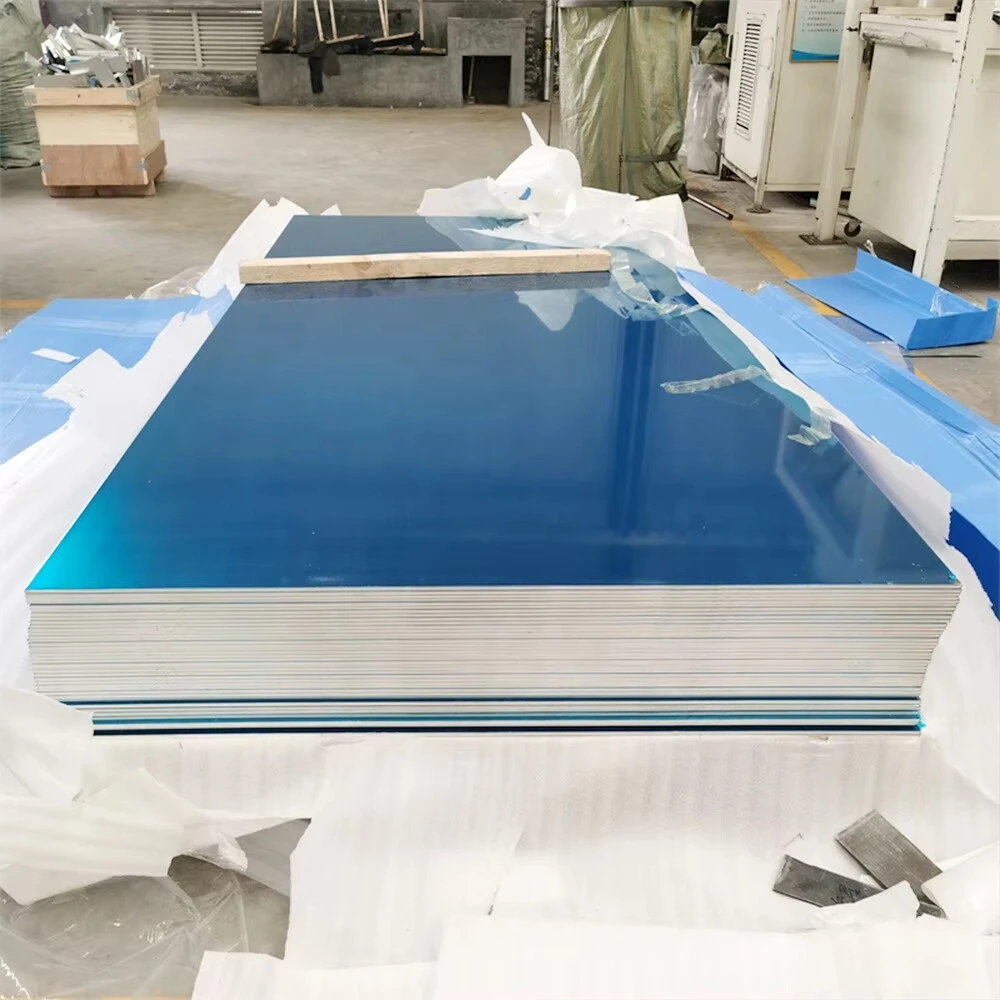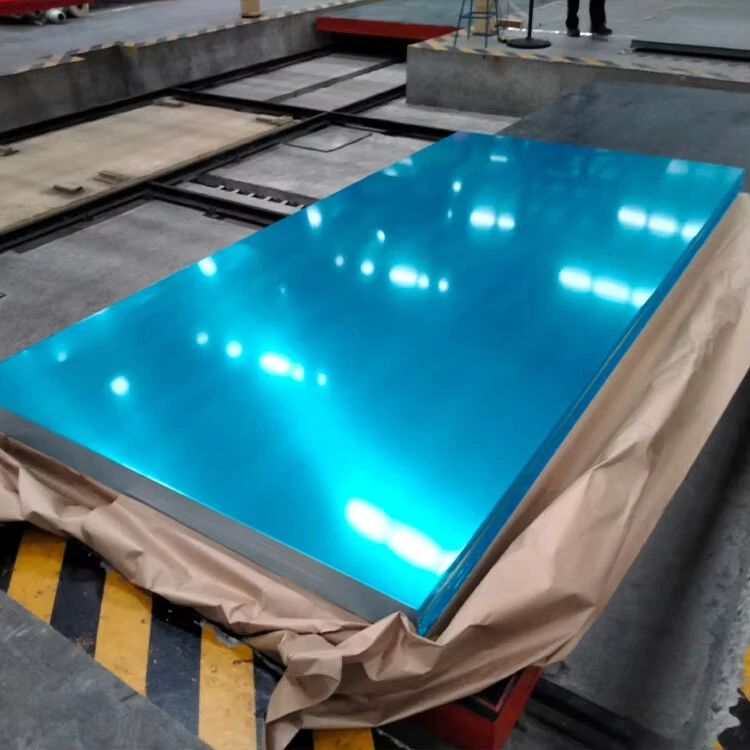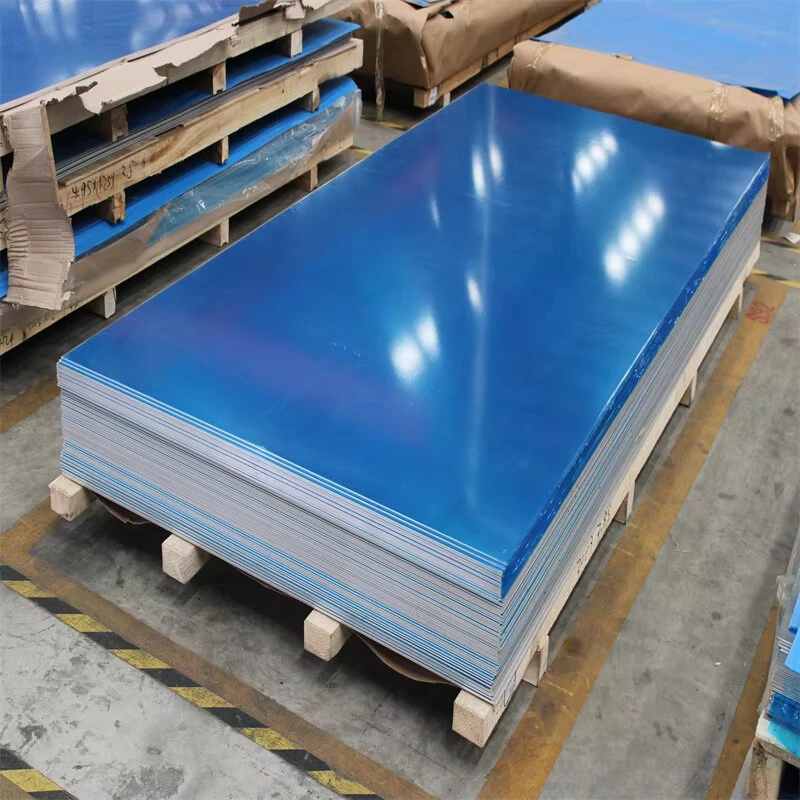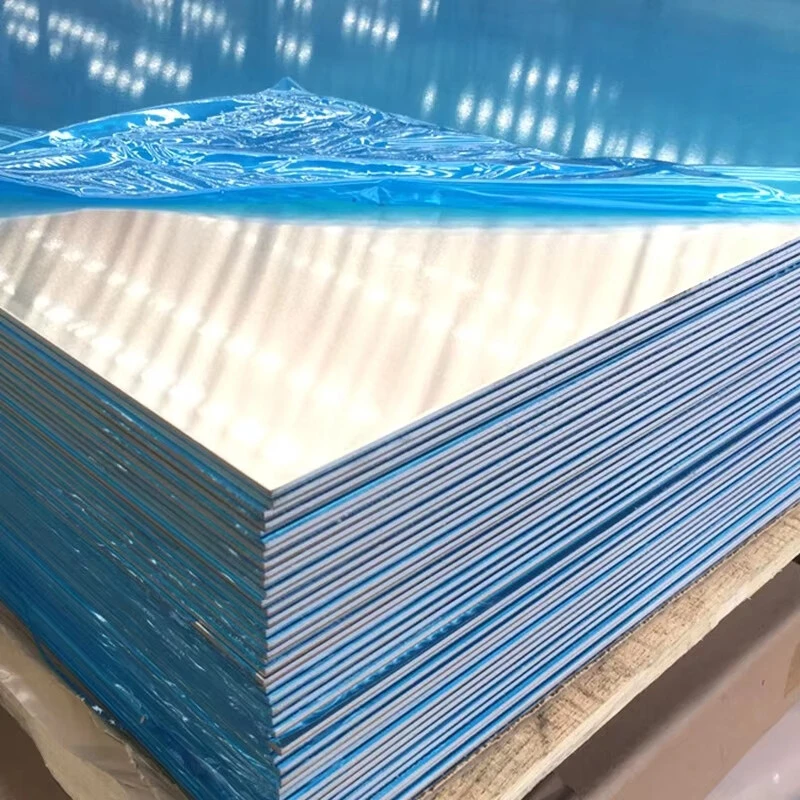1. Material Composition & Manufacturing Process
5052 aluminum alloy (ASTM B209, AMS 4015) is a non-heat-treatable Al-Mg alloy optimized for exceptional corrosion resistance and good formability. The forged plate variant offers enhanced mechanical properties through controlled deformation processing:
Alloy Chemistry:
Magnesium (Mg): 2.2-2.8% (solid solution strengthening)
Chromium (Cr): 0.15-0.35% (corrosion resistance enhancer)
Iron (Fe): ≤0.40% max
Silicon (Si): ≤0.25% max
Base Material:
Aluminum (Al): ≥96.5% (balance)
Controlled Impurities:
Copper (Cu): ≤0.10% max
Zinc (Zn): ≤0.10% max
Manganese (Mn): ≤0.10% max
Specialized Forging Process:
Cast Ingot Production: 650-690°C melt temperature
Homogenization: 540-560°C for 10-18 hours
Preheating: 400-450°C for 1.5-2.5 hours
Open Die Forging:
Initial Deformation: 425-450°C
Final Passes: 350-400°C
Deformation Ratio: 3:1 to 5:1
Controlled Cooling: 30-50°C/hour to ambient
Stress Relief: 290-315°C for 1-2 hours
Precision Machining: Custom tolerances
Produced under ISO 9001:2015 quality system with full material traceability.
2. Mechanical Properties of Forged 5052 Plate
| Property | Minimum | Typical | Test Standard | Advantage Over Rolled Plate |
| Ultimate Tensile Strength | 215 MPa | 230-260 MPa | ASTM B557 | 10-15% higher strength |
| Yield Strength (Rp0.2) | 170 MPa | 180-210 MPa | ASTM B557 | Improved through-thickness properties |
| Elongation (50mm gauge) | 12% | 16-20% | ASTM B557 | Better isotropic ductility |
| Shear Strength | 140 MPa | 150-170 MPa | ASTM B769 | Enhanced edge properties |
| Fatigue Strength (10⁷) | 130 MPa | 140-150 MPa | ASTM E466 | 15-20% superior fatigue resistance |
| Hardness (Brinell) | 60 HB | 68-75 HB | ASTM E10 | Uniform hardness profile |
| Impact Energy (Charpy) | 22 J | 25-30 J | ASTM E23 | Improved toughness |
| Modulus of Elasticity | 70.3 GPa | 71-72 GPa | ASTM E111 | Consistent elastic response |
| Compressive Yield | 180 MPa | 190-215 MPa | ASTM E9 | Better bearing capacity |
3. Forging Microstructure Control
Precision Forging Parameters:
Forging Ratio (Total Reduction):
Minimum: 3:1
Optimal: 4.5:1
Maximum: 6:1
Forging Direction Control:
Multi-directional deformation
Minimum 15% reduction in secondary direction
Temperature Profile:
Starting: 425-450°C
Final: 350-380°C
Cooling Rate: Controlled air cool
Microstructural Characteristics:
Grain Size: ASTM 6-8 (20-45μm)
Grain Structure: Equiaxed with minimal elongation
Intermetallic Phases:
Al₃Fe dispersoids
Al₈Mg₅ particles (controlled size)
Dislocation Density: 5-7×10¹⁰/cm²
Recrystallization Fraction: 90-100%
Texture: Randomized crystallographic orientation
Grain Boundary Engineering: Enhanced high-angle boundaries
4. Dimensional Specifications & Tolerances
| Parameter | Standard Range | Premium Tolerance | Commercial Tolerance |
| Thickness | 10-200 mm | ±0.5 mm | ±1.0 mm |
| Width | 600-2500 mm | ±3 mm | ±5 mm |
| Length | 1000-4000 mm | ±5 mm | ±10 mm |
| Flatness | N/A | 0.2% of diagonal | 0.5% of diagonal |
| Surface Roughness | N/A | 3.2 μm Ra max | 6.4 μm Ra max |
| Corner Radius | 2-5 mm | ±1 mm | ±2 mm |
| Edge Straightness | N/A | 0.5 mm/m | 1.0 mm/m |
Special Capabilities:
Tapered Thickness: Up to 4:1 ratio
Contoured Surfaces: 3D profiling available
Near-Net Shape Options: Reduced machining allowance
Integral Features: Bosses, pads, and ribs possible
Weight Formula: Thickness(mm) × Width(m) × Length(m) × 2.68 = Weight(kg)
5. Corrosion Resistance Performance
| Environment | Performance | Corrosion Rate | Protection Method |
| Marine Atmosphere | Excellent | <0.05 mm/yr | Anodizing (Type II) |
| Fresh Water | Excellent | Negligible | None required |
| Salt Spray (ASTM B117) | Very Good | 1000+ hours | Chemical conversion |
| Industrial Exposure | Excellent | <0.1 mm/yr | Clear coat sealing |
| Stress Corrosion | Excellent | Immune at yield | None required |
| Galvanic Compatibility | Good | Isolation needed | Insulating washers |
| Crevice Corrosion | Good | Low tendency | Design optimization |
Surface Enhancement Options:
Anodizing:
Type II (Sulfuric): 10-25μm
Type III (Hard): 25-75μm
Boric-Sulfuric: 5-15μm
Chemical Conversion:
Chromate (MIL-DTL-5541)
Trivalent chromium
Titanium-zirconium systems
Mechanical Treatments:
Shot peening (8-12 Almen)
Brush finishing
Bead blasting
6. Machining & Fabrication Performance
| Operation | Tool Material | Recommended Parameters | Surface Quality |
| Milling | HSS-Co, Carbide | Vc=350-450 m/min, fz=0.2 mm | Ra 0.8-2.5 μm |
| Drilling | Carbide drills | Vc=80-120 m/min, fn=0.2 mm/rev | H8 tolerance |
| Turning | PCD inserts | Vc=500-800 m/min | Ra 0.4-1.6 μm |
| Tapping | HSS-E taps | Vc=15-25 m/min | Good thread profile |
| Sawing | Carbide-tipped | 60-80 m/min, 2-4 teeth engaged | Clean edge |
| Waterjet Cutting | Garnet abrasive | 3800 bar, 0.4-0.8 kg/min | ±0.1 mm tolerance |
Forming Characteristics:
Bend Radius (Minimum): 1.0t (t=thickness)
Elongation Capacity: 15-20% uniform strain
Springback Factor: 0.93-0.96
Cold Working Limit: 15-18% strain hardening
Hot Forming: 260-370°C recommended
Post-Form Treatment: None required
7. Welding & Joining Technologies
Recommended Welding Processes:
Gas Tungsten Arc Welding (GTAW):
Filler: ER5356 or ER5183
Shielding: 100% Argon
Pre-weld Cleaning: Essential
Gas Metal Arc Welding (GMAW):
Filler: ER5356
Shielding: Argon + 30% Helium
Mode: Pulse spray transfer
Friction Stir Welding (FSW):
Tool RPM: 800-1200
Feed Rate: 200-400 mm/min
Tool Material: H13 steel
Mechanical Joining Methods:
Self-Piercing Rivets: Excellent compatibility
Flow-Drill Screwing: Good for thin sections
Adhesive Bonding: Excellent with epoxy systems
Clinching: Good formability allows successful joints
Post-Weld Treatment:
Stress Relief: 175-200°C for 1 hour
PWHT: Not required (non-heat treatable)
Dressing: Recommended for fatigue applications
Inspection: Dye penetrant for critical joints
8. Physical Properties for Engineering Design
| Property | Value | Application Significance |
| Density | 2.68 g/cm³ | Lightweight structural design |
| Melting Range | 605-650°C | Process temperature limitation |
| Thermal Conductivity | 138 W/m·K | Heat sink applications |
| Electrical Conductivity | 35% IACS | Electrical enclosures |
| Specific Heat | 880 J/kg·K | Thermal management design |
| CTE (20-100°C) | 23.8 ×10⁻⁶/K | Expansion joint calculation |
| Modulus of Elasticity | 70.3 GPa | Deflection analysis |
| Poisson’s Ratio | 0.33 | FEA simulation parameter |
| Damping Capacity | 0.002-0.003 | Vibration control applications |
9. Quality Control & Certification
Testing Protocol:
Chemical Analysis: Optical emission spectroscopy
Mechanical Testing:
Full tensile test suite (L, LT, ST directions)
Hardness mapping across section
Microstructure Evaluation:
Grain size determination
Inclusion rating
Intermetallic phase analysis
Non-Destructive Testing:
Ultrasonic per ASTM B594
Dye penetrant for surface defects
X-ray for critical applications
Dimensional Inspection:
CMM verification of critical dimensions
3D laser scanning for complex geometries
Surface profile measurement
Available Certifications:
ISO 9001:2015 Quality Management
AS9100D Aerospace Standard
NORSOK M-650 for Marine Applications
NACE MR0175/ISO 15156 Compliance
PED 2014/68/EU for Pressure Equipment
Lloyd’s Register Material Certification
DNV-GL Material Approval
Material Test Certificate EN 10204 3.1/3.2
10. Industrial Applications & HandlingProducts Description
Primary Applications:
Marine components and fittings
Chemical processing equipment
Transportation structures
Food processing equipment
Architectural components
Pressure vessel nozzles and flanges
Semiconductor manufacturing equipment
Military hardware components
Valve bodies and pump housings
Railway vehicle structures
Material Handling Guidelines:
Lifting & Transport:
Use wide nylon slings
Avoid chain contact with surface
Support large plates fully
Prevent moisture accumulation
Storage Requirements:
Store in dry environment (<65% RH)
Avoid contact with steel materials
Use neutral pH packing materials
Store vertically when possible
Surface Protection:
Protective film application
Interleaving with pH-neutral paper
VCI (volatile corrosion inhibitors)
Edge protectors during transport
Machining Preparation:
Acclimatize to shop temperature
Clean with non-alkaline detergents
Use dedicated aluminum tooling
Apply cutting fluid specifically for aluminum
11. Forged vs. Rolled Plate ComparisonProducts Description
Mechanical Property Advantages:
Improved through-thickness properties
Reduced directional variation (anisotropy)
Enhanced fatigue performance (15-20%)
Superior machinability and tool life
Better dimensional stability in service
Microstructural Benefits:
Refined grain structure
Reduced porosity (<0.5%)
Controlled intermetallic distribution
Minimized segregation effects
Favorable crystallographic textures
Performance Differentiators:
Higher damage tolerance
Improved stress corrosion resistance
Enhanced dynamic load capacity
Better high-temperature property retention
Superior resistance to cyclic deformation
12. Sustainability & Environmental ConsiderationsProducts Description
Material Production Metrics:
Embodied Energy: 165-180 MJ/kg
Carbon Footprint: 9.5-11 kg CO₂e/kg
Recycled Content: Up to 75% available
Water Usage: 11-15 m³/metric ton
Recyclability: 100% with no degradation
RoHS Compliance: Full compliance certified
REACH Status: No SVHC substances
Life Cycle Considerations:
Service Life: 25-40+ years in marine environments
Maintenance: Minimal requirements
End-of-Life: High scrap value and recycling efficiency
Energy Recovery: 95% energy saving vs. primary production
Disposal Impact: Non-toxic, non-hazardous classification

